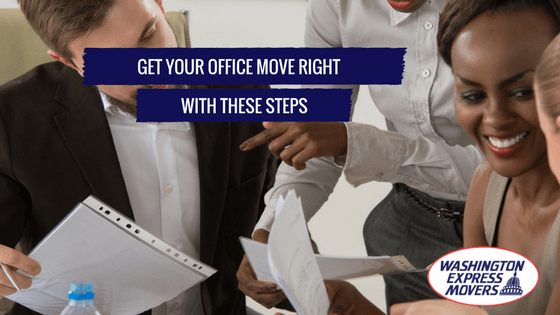Get Your Office Move Right with These Steps
Once you know it’s time to move from one location to another, how do you get started? How can you be sure that you are making the change that is best for your business? If you take the time to thoroughly consider your plan of action, we think you’ll find that moving is easier than you believe. There are four main steps you can take to ensure that your move goes smoothly.
- Take time to research your options and choose the best one for your business needs.
- Make a thorough list of needs that must be met.
- Set your budget.
- Study all of your options.
Take Time to Research
If you try to make a decision last minute on where to move, you’ll put your whole business under a lot of unnecessary pressure. Do all that you can to avoid this, as this could disrupt your daily workflow. Instead, decide ahead of time when you will need to move. As soon as you know that change is on the horizon, start looking around. Take a close look at all potential options, and make sure to carefully consider the pros and cons of all choices. Research has shown us that we are more likely to regret a decision that was made hastily over one that was made with only a few options. Take your time, do your research, and make an informed decision.
Decide What Needs Should Be Met
Make a list of things your new location needs to have. If you aren’t sure what to put on this list, there are a few ways to get ideas.
Interview your employees
Meet with your team in small groups or even one-on-one to get their feedback. Ask about the current work conditions to find out what they like and what they would change. How would a new office space meet these issues? While your employees will have some great ideas for the new location, don’t forget to take note of what they love about the current office. You don’t want to accidentally take that away from them! These interviews can also tell you what current commute times look like, how they feel about building security and additional access, proximity to public transit, parking, and other amenities. However, keep in mind that there will likely be some losses, too. It’s common to lose employees when making a big location change.
Check your observations
Your employees have habits that they may not be aware of, but you can make a note of them if you pay attention. For example, how do they use the common areas? Do those with offices leave the doors open, or do they close them? Do people leave the office for snacks and coffee? Where do they eat? The point of this exercise is to find space for improvement. Do not judge your employees; simply make notes for your future office space.
Determine your objectives
What’s the goal in this move? How will moving help your business? For those of you with commercial businesses that are about to grow, a new location might be just what you need. For those who are looking to improve communication within, you may need to focus more on the office layout than the overall size. Feel free to have brainstorming sessions with your employees and get their input. Write down what really matters!
Once you have all of these written down, narrow down the factors that really matter to you and your company. While it’s unlikely to get everything you’re setting out to find, having this rough guideline will help you choose the best fit for your business.
Choose a Budget
Now that you know what you want in your new office, it’s time to pick a budget. However, make sure it’s reasonable. Your budget needs to cover size, location, utilities, and whatever else your business needs to handle. With that in mind, take a closer look at your resources. Will you be able to afford new furnishings? What about a remodel? Does artwork matter to you and your business? Whatever it is that you need to succeed, a budget is number one. Make sure to set some money aside for unexpected repair work.
Check Your Options
Once you have chosen your criteria and your budget, you can start defining more exact requests. Consider the following:
- Overall size requirements to fit employees
- Desired layout for optimum productivity
- Workstations for all employees
- Potential for renovations if needed
- Locations within budget
- Fitting with the brand
- Available meeting space, including floors and meeting rooms
- Private office availability
- Location and parking capabilities
This checklist should tell you what matters most when moving to a new commercial property and be your guide on your way to success.
While hunting for a new commercial property can be exciting, it’s important not to get tied up in the bells and whistles of a new space. Set the criteria, make sure this space meets your requirements, and only consider it if it makes sense.
Washington Express Movers
Once you have the perfect spot and have signed the paperwork, give our team a call! We know exactly how to care for your office moving needs, including furniture and artwork transportation. We would be happy to assign a project manager to your move to make sure all your needs are met. Proudly serving the Washington, D.C. metro area, our crew is ready to help your commercial move go as smoothly as possible! Reach out to our team today to get started.

